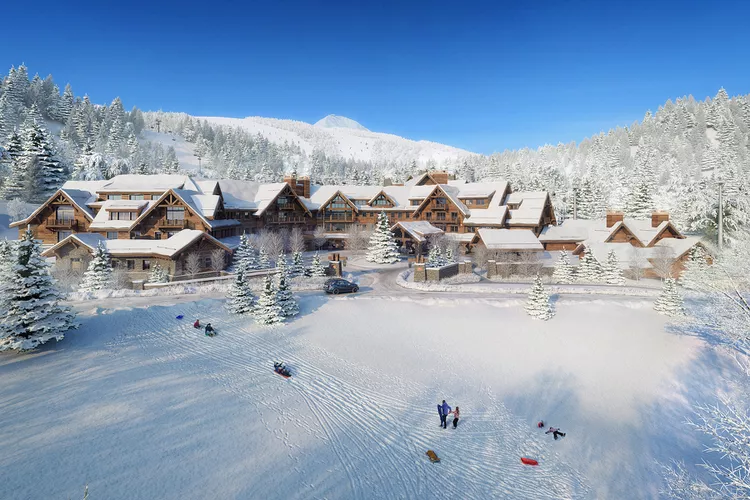Why Montana Is Best Experienced in the Fall and Spring
- Understanding Montana’s Beauty
- Fall and Spring Seasons in Montana
- Exploring Hiking and RV Opportunities
Summertime is for the crowds — here’s why Montana is best experienced in the fall and spring.
Fact checked by Elizabeth MacLennan

Montana is most commonly known as Big Sky Country. It’s an apt nickname referring to the vast horizon lines that characterize much of the landscape. Travel westward and those lines will increasingly be met with mountains as they trace the distant edges of your field of view. Speckled throughout is a kaleidoscope of wonder: national parks, natural phenomena, and unspoiled forests filled with wildlife. All of it makes the official motto of this place — the “Treasure State” — far more suitable of a moniker. Moreover, if you venture here during the shoulder season, the greatest treasure is getting it all to yourself.
Fall is my favorite season in Montana, says Paul Makarechian, Bozeman native and owner of Lone Mountain Ranch, a luxury property seated on 148 acres of secluded farmland in the rugged southwestern part of the state. “Crowds are less, the trees turn colors, the wildlife is active, the rivers are teeming with fish, and the air quality is perfect.”

Lone Mountain’s 27 standalone cabins are easier to secure this time of year, too. Come Christmas, its proximity to Big Sky ski resort makes reservations more scarce (and much costlier), as does the property’s access to ample Nordic adventure, along with horse-drawn sleigh rides. Some of that burden will now be lessened thanks to the opening of the Montage in 2021.
The 139-room hotel stands out as the largest lodge of its kind in a town that has approximately 3,000 year-round residents. Guests can enjoy ski-in/ski-out access to its myriad amenities, including spa services and six separate food and beverage concepts. Rates will start at $2,291 per night during the Christmas holiday.
Not to be outdone, Lone Mountain has completely revamped and upgraded the dining experience at its Horn & Cantle saloon. Diners can choose from a litany of locally sourced proteins rendered in a decidedly cosmopolitan fashion.
The Montage Big Sky Is Opening Just in Time for a Winter Vacation
Arrive in the summer, and the masses are mostly drawn to Yellowstone. The western entrance to one of the most visited national parks in the U.S. is just an hour away from Big Sky. However, in early fall and late spring, the splendor of this backcountry is hardly lessened. Thousands of hydrothermal features, including geysers, fumaroles, and hot springs, are going strong and still accessible — some even by snowcoach. By early November, the park’s 5,000-strong population of bison has begun a mass migration to lower elevations. The wildlife viewing is in full swing and the only thing missing is the traffic.
Although most of the famed lodges and inns of Yellowstone shutter at the end of October, the historic Mammoth Hot Springs Hotel and Cabins is open until the end of November. The circa 1936 standout, constructed by architect Robert C. Reamer, recently completed a massive renovation and refurbishment.
Many will opt to roll into this part of the country riding their own lodging — in RV form. This is especially true in the early spring, when most of the seasonal inns have yet to open. It’s a great way to get an early jump on sightseeing, and nowadays you don’t even have to own a recreational vehicle to operate one. Startups such as RVshare are bringing the Airbnb model to mobile homes, and they’re especially useful in western Montana, with its bounty of RV parks at your disposal.

“Montana and the Intermountain West are by far the most popular areas to discover by RV,” says Jon Gray, CEO of RVshare. “There are endless opportunities for exploration among state and national parks and scenic highway routes. Moreover, this time of year, the parks are less crowded and there is more RV inventory available than in the peak summer months.”
Ideal for families and group travel, you can reserve well-appointed RVs that sleep up to six people for as little as $200 a night. And there are plenty of sleek and stylish models to choose from in hip boomtowns like Bozeman and Missoula — ideal locales to start and end your adventures. The former just expanded its Main Street to the Mountains trail system, affording direct access from downtown to more than 80 miles of surrounding hikes. The latter is Montana’s undisputed gastronomic mecca, with dozens of new eateries, craft breweries, and distilleries popping up along the banks of the Clark Fork River in the past decade.
In either town, businesses are ready to receive you in spring and fall, often at discounted rates for everything from dining to overnight stays. “Shoulder season is especially great for those who can work remotely and take advantage of low prices and dissipated crowds,” adds Gray.
For outdoor adventurers, packing extra layers is advisable. However, they are rewarded with vivid foliage in the fall (along with a relatively dry climate). The spring thaw, conversely, bestows backwood trekkers with an abundance of waterfalls. Glacier National Park holds hundreds of them, many of which you can hike to even when Going-to-the-Sun Road is closed to vehicular traffic. In fact, late May and mid-October are great times to rent an e-bike and pedal along the famed scenic route. You’ll enjoy the views sans the stress of having to share a high-altitude active motorway. Plus, you’ll work up a nice sweat to fend off afternoon temperatures, which often dip below 40 degrees Fahrenheit.
“It can get crisp quickly on either side of the summer,” says Makarechian. “However, you really can’t go wrong visiting during shoulder season. This is nature’s playground. Even if it’s a bit chilly, you can always admire it from a hot spring — with a glass of wine in hand.” A state worth treasuring, indeed.





